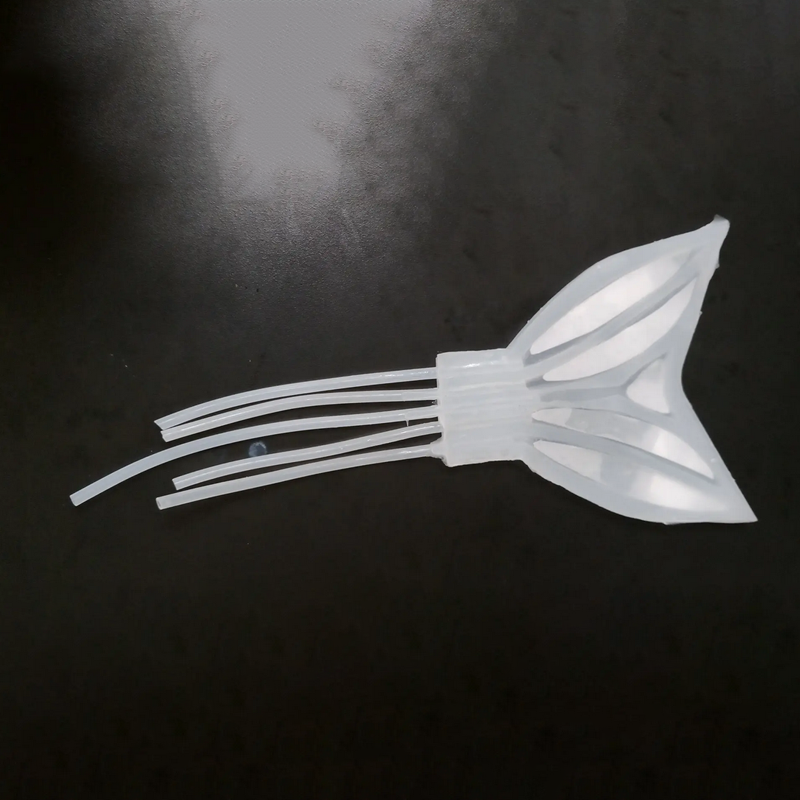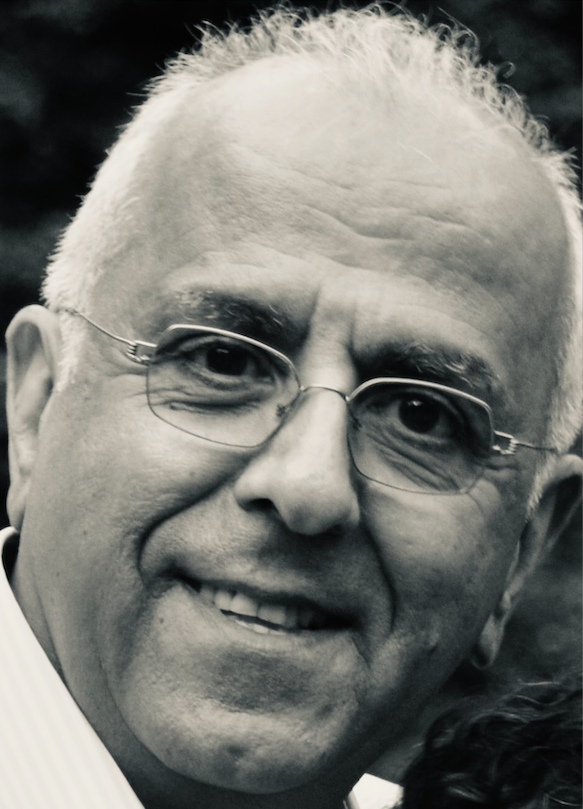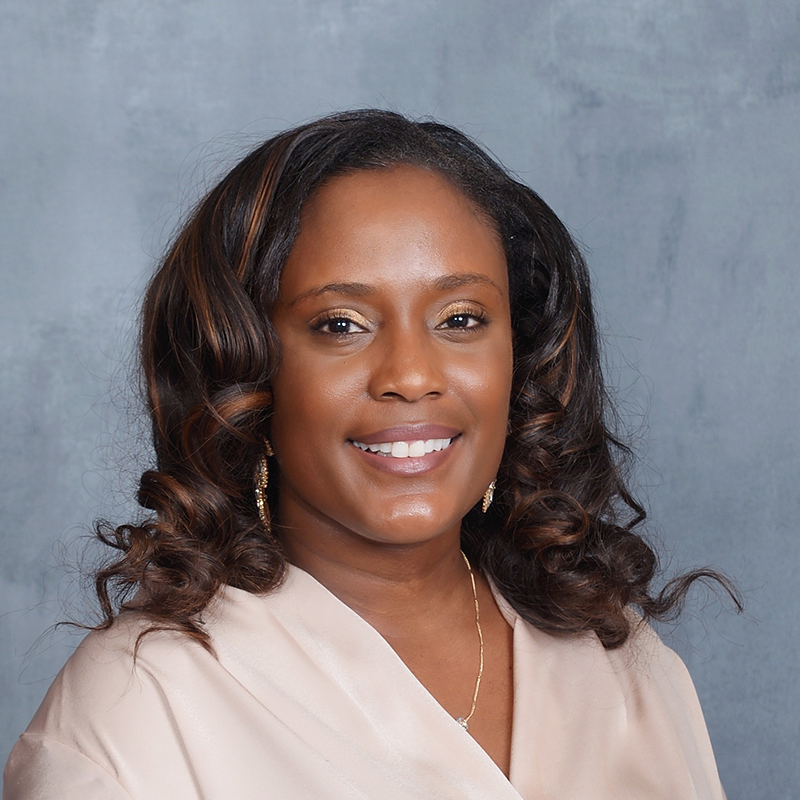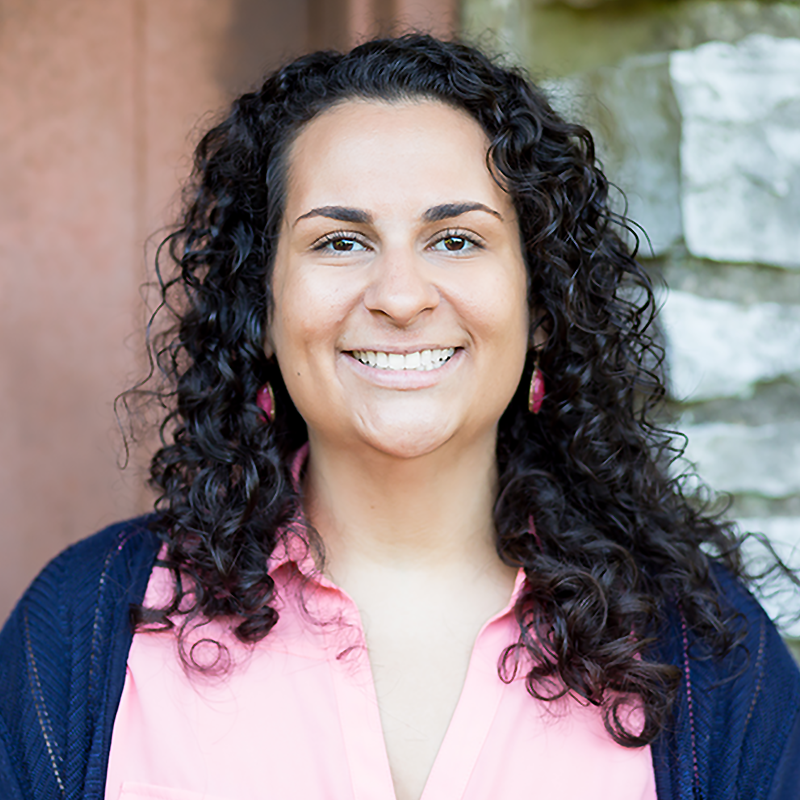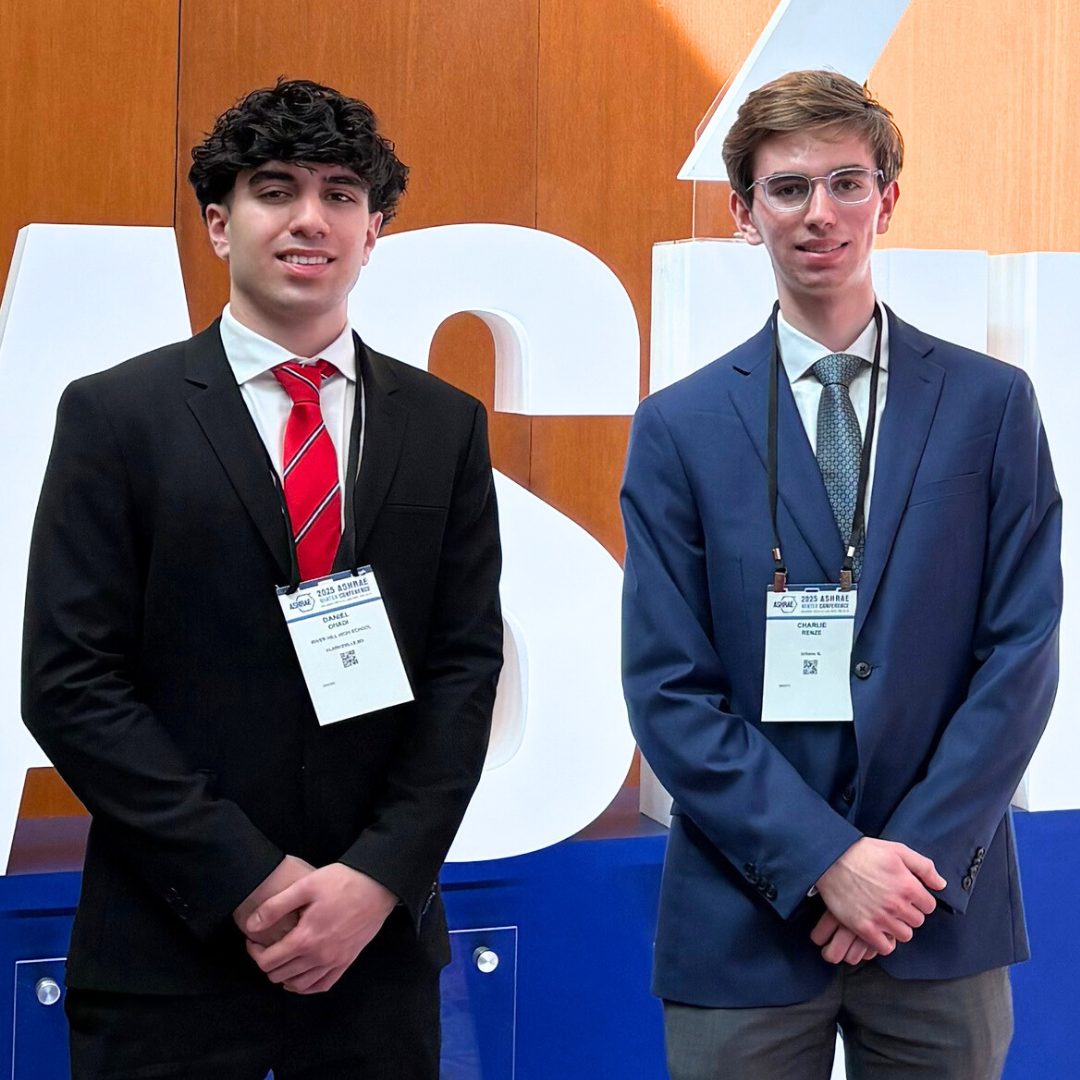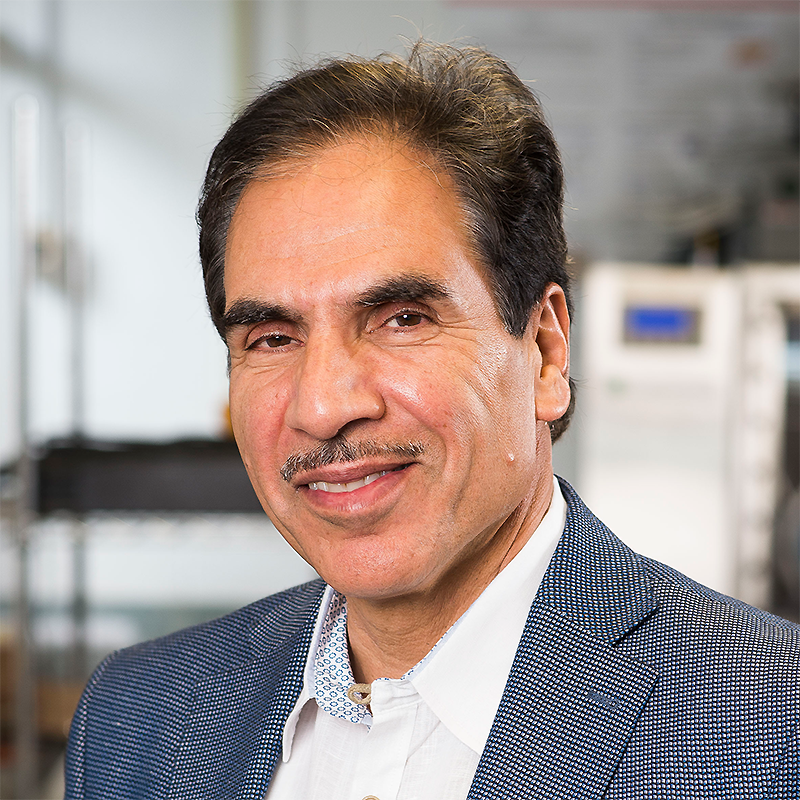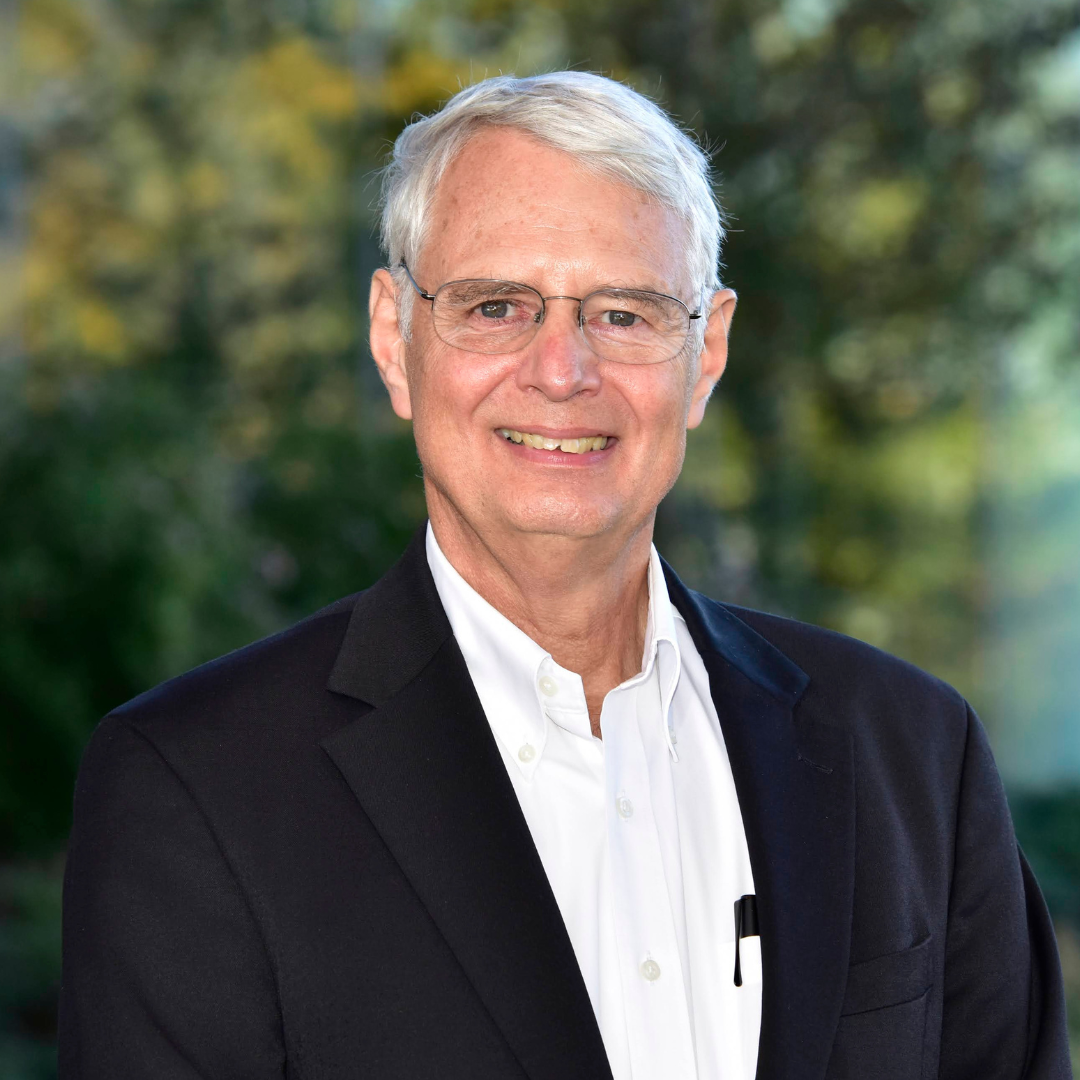News Story
CEEE Team Takes High Schoolers on a “Moon Mission”

Mechanical engineering graduate students Het Mevada and Po-Ching Hsu help students test their heat exchanger prototypes.
Think quick: Given a piece of cardboard, aluminum foil, black construction paper, bendable straws and tape, how would you build a solar water heater to be stationed on the moon? That’s the challenge that 20 high school and community college students faced in an engineering activity led by the University of Maryland’s Center for Environmental Energy Engineering (CEEE) this summer as part of a STEM awareness workshop at the University of the District of Columbia (UDC). The program is geared toward local students from demographics underrepresented in engineering.
The two-week long workshop focused on three key themes: energy, advanced manufacturing and space technology. Looking for a hand in teaching the students about energy engineering, UDC turned to CEEE for its expertise. A team of five CEEE students along with postdoctoral research associate Andrew Fix traveled to UDC on July 9 to hold a daylong, interactive session on engineering and energy. After informing students about the wide variety of engineering disciplines, Fix focused on energy engineering, the role of heat exchangers and the engineering basics behind them.
Then came the challenge. Suppose that NASA wanted to develop a solar water heater for a moon base. Given some simple materials, how would you design a heat exchanger that would provide the greatest rise in water temperature? The students set to work designing and building their water heaters — taping together straws in a variety of configurations, along with rolling out reflective aluminum foil and/or applying heat-absorbent black paper.
“Today they were building simple water heat exchangers out of straws and tape, quickly learning the practical principles of heat exchanger design. In a few years they might be designing heat exchangers for low-GWP heat pumps. Everyone starts somewhere!”
CEEE Postdoctoral researcher Andrew Fix
Fix, along with mechanical engineering graduate students Het Mevada, Tamoy Seabourne, Po-Ching Hsu, undergraduate intern Kavyasri Gouda and high school intern Aiden Wang, provided guidance when students ran into obstacles. “It's valuable to take time to interact with young students, especially ones who maybe haven't had as much exposure to STEM careers,” says Fix. “Today they were building simple water heat exchangers out of straws and tape, quickly learning the practical principles of heat exchanger design. In a few years they might be designing heat exchangers for low-GWP heat pumps. Everyone starts somewhere!”
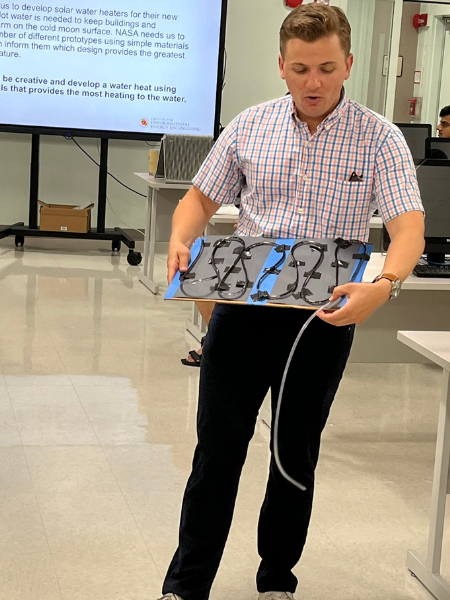 CEEE postdoctoral researcher Andrew Fix explains the heat exchanger challenge to student participants.
CEEE postdoctoral researcher Andrew Fix explains the heat exchanger challenge to student participants.Once the students had their prototypes ready, it was time for the moment of truth. They headed to a testing station in the back of the classroom, where a heat lamp simulated the sun. With the help of the CEEE team, the workshop participants tested their contraptions, carefully pouring in water and then peering anxiously as the liquid trickled through the translucent straw tubing before being released into a cup where the temperature was taken. Not high enough of a temperature rise? That’s OK, Fix reassured the group. Engineering is all about designing, testing and revising, he explained.
After a group discussion on ways to improve the heat exchangers, the students revised their prototypes and conducted a second round of testing. “These students, who have never taken a heat transfer course, had really great ideas, just from their intuition,” Fix says. “And some of the students got very serious about redesigning their heat exchangers once they learned some tips and tricks. It was exciting to see how interested they were to improve their designs — that's a key quality of a future engineer.”
Later in the day, the CEEE team led a lesson on the basics of how electricity is generated and transported to buildings, and they discussed the physics of photovoltaic solar electricity, before dividing the students into groups where they built miniature robots powered by a small solar panel. “Events like this show students that STEM can be very interesting and impacts all sorts of things in their lives,” says Fix. “And it introduces them to career possibilities where they can help make a difference in the world.”
Published July 19, 2024
